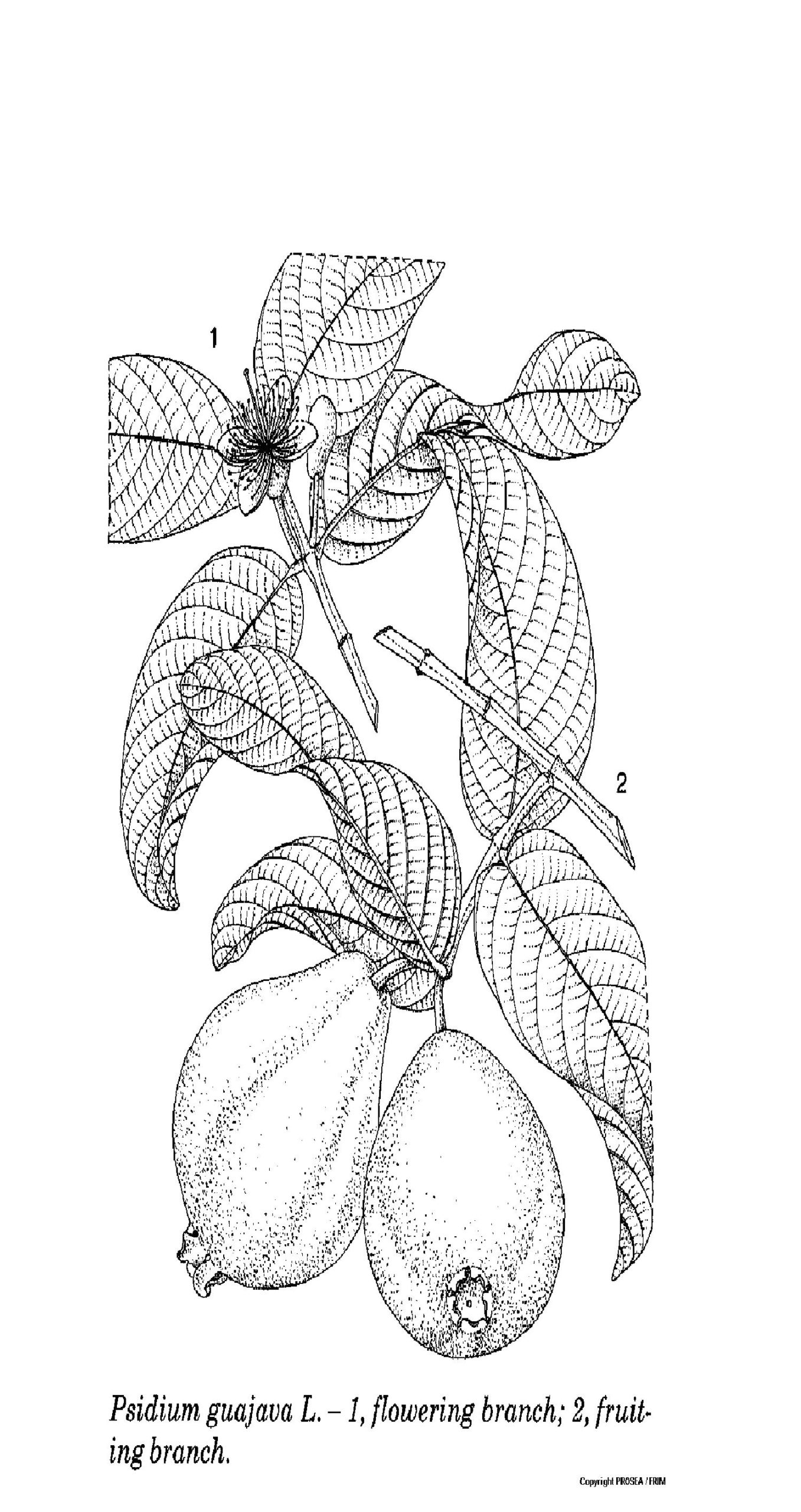Psidium guajava L.
Family
Myrtaceae
Synonyms
Psidium aromaticum Blanco.
Vernacular Names
| Malaysia |
Jambu biji, jambu kampuchia, jambu berase (north). |
| English | Guava. |
| Brunei |
Jambu batu (Malay), biyabas. |
| Indonesia | Jambu biji (Malay), jambu klutuk (Javanese). |
| Philippines | Guava, bayabas (Tagalog), guyabas (Iloko). |
| Burma | Malakapen. |
| Cambodia | Trapaek sruk. |
| Laos | Si da. |
| Thailand | Farang (central), ma-kuai, ma-man (north). |
| Vietnam |
Oi. |
| French | Goyavier. |
Geographical Distributions
Psidium guajava is indigenous to the American tropics. In the opinion of De Candolle, it originated from the area between Mexico and Peru. The Spaniards took it across the Pacific to the Philippines and the Portuguese introduced it from the West into India. At present, it is well-distributed and naturalised throughout the tropics and subtropics.
Description
P. guajava is a shallow-rooted shrub or small tree, up to 10 m tall, branching from the base and often produces suckers. Its bark is smooth, green to red-brown and peels off in thin flakes. The young twigs are 4-angled, ridged and hairy.
The leaves are arranged opposite and glandular. The petiole is 3-10 mm long. The blade is elliptical to oblong, measuring 5-15 cm x 3-7 cm, hairless above, finely hairy beneath and with veins prominent below.
The flowers are solitary or in 2- to 3-flowered cymes, axillary and about 3 cm in diameter. There are 4-6 sepal lobes which are 1-1.5 cm long, irregular and persistent. There are 4-5 petals which are white and 1-2 cm long. The stamens are numerous and 1-2 cm long. The ovary is 4- to 5-locular; with 1.5-2 cm long style and headed stigma.
The fruit is a berry, which is spherical, ovoid or pear-shaped, 4-12 cm long and surmounted by the sepal lobes. The exocarp is green to yellow. The mesocarp is fleshy, white, yellow, pink or red, with stone cells, sour to sweet and aromatic. The seeds 3-5 mm long are usually numerous, embedded in pulp, yellowish, bony and kidney-shaped.
Ecology / Cultivation
P. guajava is a hardy tree that adapts to a wide range of growing conditions. In the tropics, the tree is found from sea-level to an altitude of about 1500 m. It can withstand temperatures from 15-45 °C; the highest yields are recorded at mean temperatures of 23-28°C. In the subtropics, quiescent trees withstand light frosts and mean temperatures above 16°C for 3.5-6 months (depending on the cultivar) suffice for flowering and fruiting. P. guajava is more drought-resistant than most tropical fruit crops. For maximum production in the tropics, however, it requires 1000-2000 mm of rain, evenly distributed over the year. If fruit ripens during a very wet period, it loses flavor and may split.
Line Drawing / Photograph
References
- Plant Resources of South-East Asia No.2: Edible fruits and nuts.



